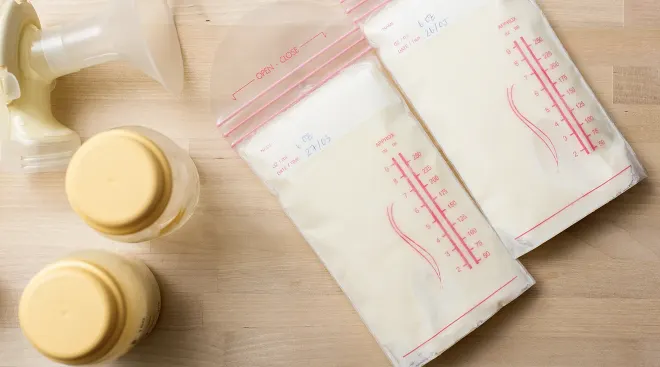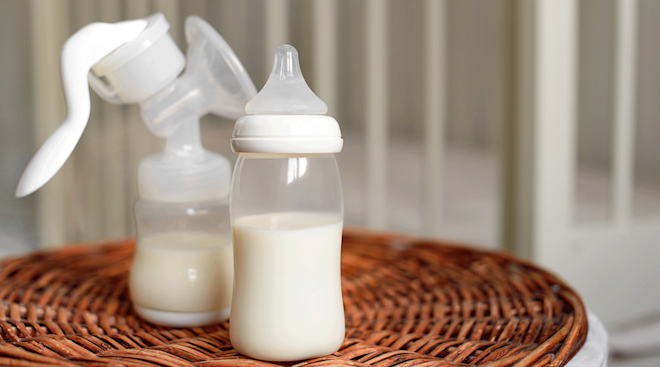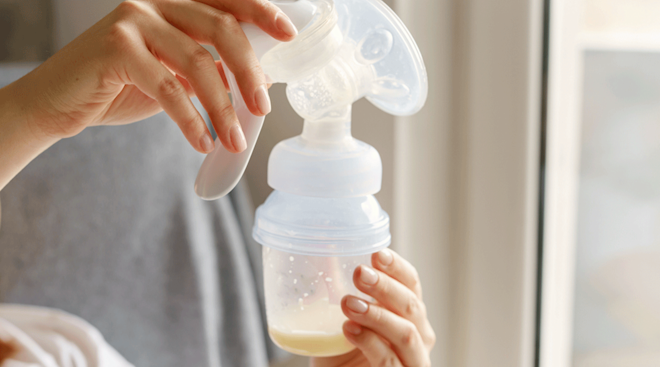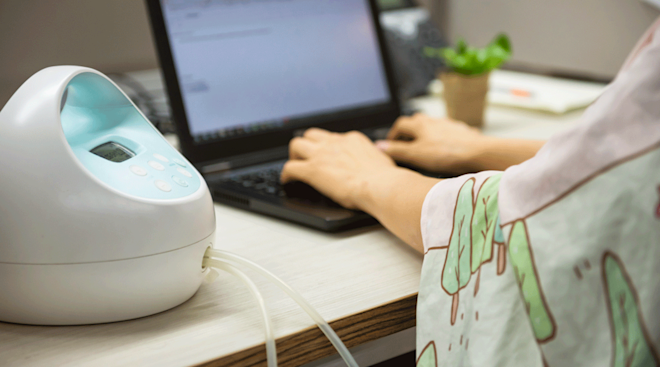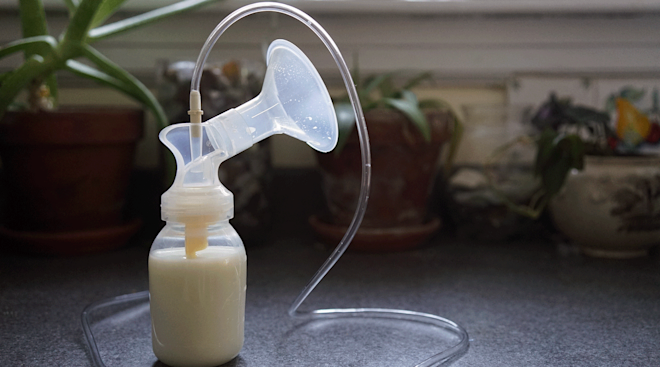Can You Breastfeed With Flat or Inverted Nipples?
Nipples and breasts come in all shapes and sizes, and you may not have paid much attention to yours until you started thinking about breastfeeding. While most nipples protrude, some lay flat or are inverted (point inwards at the tip)—and this can cause nursing challenges. Don’t be discouraged if you realize your nipples don’t exactly stick out; it’s still totally possible to find success in your feeding journey—you may just need to try a few hacks to help baby latch and get things going. Ready to nip this potential problem in the bud? Here’s what you need to know about flat or inverted nipple breastfeeding.
Unlike protruding nipples, flat nipples lay flush with your breast. Having flat nipples is generally harmless, and it’s also something that can come and go. “Many people have nipples that are flat some of the time,” says Leigh Anne O’Connor IBCLC, a board certified lactation consultant and La Leche League leader.
In general, nipple shape is determined by genetics, notes Rebekah Huppert, RN, BSN, a lactation consultant at the Mayo Clinic. However, pregnancy hormones can play a role too. “Sometimes nipples can appear flat when there’s swelling in the areola, which is common in pregnancy and post-delivery,” she says. In other words, if you discover this issue at the start of your breastfeeding journey, it might be a temporary inconvenience.
That said, Kira Sy, RDN, IBCLC, a dietician and lactation consultant at the Children’s Hospital of Philadelphia, says that a little less than a quarter of the patients she sees have flat nipples—so while it’s not overwhelmingly common, it’s also far from rare.
What do inverted nipples look like? Basically, the tip of the nipple points inward. “You may see a crease in the tissue or a divet, and it’s going back in towards the chest wall,” says Kathleen Mahan, RN, IBCLC, a registered nurse and lactation consultant at Northwestern Medicine Central DuPage Hospital in Illinois.
Research suggests that up to 20 percent of the population have inverted nipples. However, “truly inverted nipples—those that do not [pop out] after stimulation—are more rare,” Huppert says.
An inverted nipple can be something you’re born with or it can happen from trauma, breast infections or, in rare cases, breast cancer, explains Sy. “The usual cause of the nipple inversion is tight connective tissue or other problems with the ductal system connected to the nipple,” she adds. In other words, there’s no reason to panic. But if one or both nipples are inverted, reach out to your doctor and get examined.
Yes, it’s possible to breastfeed with flat or inverted nipples. “Sometimes a flat or inverted nipple everts when baby latches on,” explains Mahan. “Sometimes when we get things going, the anatomy can change.”
That said, inverted or flat nipple breastfeeding may prove to be a bit difficult. Among other things, baby may have a hard time latching. “Babies typically need a good amount of breast tissue and nipple to hit the ‘sweet spot’ in their mouths to allow for good latch and extraction of milk,” explains Sy. “Flat or inverted nipples lack the length to reach this spot which makes breastfeeding baby challenging.”
Keep in mind that, while discomfort is common and normal with early breastfeeding, those with inverted or flat nipples may experience even more soreness or pain, as baby has to work harder to get to your nipple and their latch may be off, says Mahan.
If you have flat or inverted nipples, experts recommend working with a lactation consultant—you can even consult them before baby is born if you know this might be an issue. “They’ll go over different positions, breast compressions or holds and techniques for nipple eversion before moving on to different feeding aids like nipple shields,” says Sy.
A nipple shield, which is a silicone device worn over your nipple, helps hold your nipple into an extended position that’s ideal for breastfeeding, making it a “common tool,” for those with flat or inverted nipples, says Huppert. You can also use something called a nipple everter, which works to draw out your nipple before baby latches on. “Sometimes it helps to manually pull out the nipple or pump for a few minutes” before nursing, explains O’Connor. There are even special cups you can wear inside your bra that apply mild pressure to shape the nipple and help it pop out when you’re not nursing, adds Mahan.
If you have sore nipples, Sy recommends applying some expressed breast milk on them, and letting it air dry. You can also try cooling gel pads, which slip into your bra.
Ultimately, experts stress the importance of working with a lactation consultant if you’re breastfeeding with flat or inverted nipples. They should be able to give you personalized advice and coach you along the way. “There’s increased flexibility in the nipple after birth, so some nipples that were short or flat will start to pop out over time and with use,” says Huppert. Either way, don’t feel dismayed if you’re having trouble getting baby to latch or experiencing discomfort in the beginning stages of breastfeeding. With time, help and the right tools, you can find success in your journey.
About the experts:
Leigh Anne O’Connor, IBCLC, is a board-certified lactation consultant in New York City and a leader of La Leche League.
Rebekah Huppert, RN, BSN, is a lactation consultant at the Mayo Clinic in Rochester, Minnesota.
Kathleen Mahan, RN, IBCLC, is a registered nurse and lactation consultant at Northwestern Medicine Central DuPage Hospital in Illinois.
Kira Sy, MS, RDN, IBCLC, is a registered and dietician lactation consultant at the Children’s Hospital of Philadelphia.
Please note: The Bump and the materials and information it contains are not intended to, and do not constitute, medical or other health advice or diagnosis and should not be used as such. You should always consult with a qualified physician or health professional about your specific circumstances.
Plus, more from The Bump:
Navigate forward to interact with the calendar and select a date. Press the question mark key to get the keyboard shortcuts for changing dates.

































